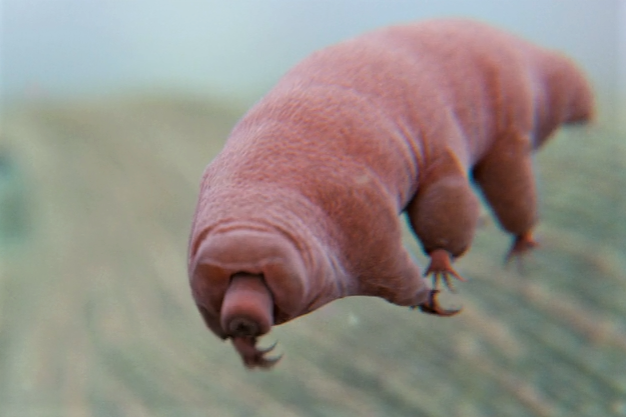Thousands of species living on Earth are too small to be seen with the naked eye. See what Sean (Conservation Science Investigator) discovered about the microscopic water bears’ amazing ability to survive in extreme environments and the importance of nature conservation for all creatures big and small.
***
Written by Sean, Little Green Guards® C.S.I.
As part of my investigation about nature I interviewed Dr. Andy Phillips (President of LVDI International) and asked him why he decided to major in biology when he was in college. Here is what he told me:
“I always loved animals. I also liked art and photography. When I was a sophomore I learned how to use some very powerful microscopes that can take pictures of things that are very small. One day I collected some moss and looked though the eyepiece of one of the microscopes to see what was there. That was when I saw my first tardigrade. From that point on I was hooked on biology and chose that as my major.”
I had never heard of tardigrades, so I did some further investigation. Below are my research notes, following by the sources where I obtained the information1-7.
- Tardigrades are very small invertebrate animals, no more than 1.5 mm long. Because they are tiny, tardigrades weren’t discovered until after the invention of microscopes in 1773 by Johann August Ephraim Goeze, a German pastor.
- Because they have a plump body with eight stubby legs, Pastor Goeze named them kleiner Wasserbär, meaning “little water-bear”. In 1776, an Italian biologist named Lazzaro Spallanzani described them as il Tardigrado or “the slow stepper” based on their sluggish movement. Then, in the following year the name Tardigrada was used to represent this group. There are over 1,000 known species of water bears.
- What is truly amazing about the tardigrades is their ability to survive practically everywhere. They can be found in semiaquatic terrestrial, freshwater and marine environments.
- On land they prefer to live in moss and lichen. Many tardigrade species subsist on a liquid diet by sucking juices from plants and algae, but some species are carnivores or even cannibals that feed on other tardigrades.
- When water in their habitat evaporates, they can survive drying out by curling up into a ball, known as a Tönnchenform or tun for short. In this state, the tardigrade develops a protective coating and slows its metabolism to 0.01% of its normal level.
- Tardigrades typically have a lifespan of only a few months but may live up to 30 months, not including their time in the tun state. As strong and invincible as they may seem, tardigrades are not immortal.
- In the tun state, they can withstand almost any environmental conditions, ranging from extreme temperatures to the vacuum of space. However, not all tardigrades are the same. Some species are tougher than others. They also don’t all have to be in a tun state to survive harsh environmental conditions.
- How tardigrades cope with extreme heat and cold, high pressure and radiation is still a scientific mystery. What we do know is that they have lived on Earth for 600 million years and will probably survive long after humans are gone.
After completing my report on water bears, I was curious about the work of LVDI International, so I asked Dr. Phillips a few more questions:
What motivated you to start LVDI International?
“As a field biologist I recognized that people who share habitats with wildlife are ultimately the only ones who can save those species. Because the places where the wildlife occurs tend to be remote and the local people are generally undereducated and poor, they often must rely on harvesting the scarce natural resources around them to survive. Our organization provides educational and livelihood opportunities for communities in areas with high biodiversity to help decrease their reliance on nature and improve basic living standards.”
What overall goal does your organization hope to achieve?
“Humans are responsible for causing the sixth mass extinction on Earth. As we exert a major influence on nature we must learn and practice living in harmony with nature. The mission of LVDI International is to inspire and empower people to protect nature. Through our efforts in education, capacity building and scientific research we will continue to get closer and closer to achieving our goal for a healthy planet where people are responsible stewards of our natural resources.”
This investigation has inspired me to do all I can to live in harmony with nature, and that includes respecting all animals, even the tardigrades.
Sources:
- https://animaldiversity.org/accounts/Tardigrada/
- https://www.livescience.com/57985-tardigrade-facts.html
- https://www.nbcnews.com/mach/science/what-tardigrade-ncna1065771
- https://serc.carleton.edu/microbelife/topics/tardigrade/index.html
- https://en.wikipedia.org/wiki/Tardigrade
- https://www.youtube.com/watch?v=-irqb99btZY
- https://www.ted.com/talks/thomas_boothby_meet_the_tardigrade_the_toughest_animal_on_earth/transcript?language=en#t-22641
 Sean is an 8th grade student in Los Angeles County.
Sean is an 8th grade student in Los Angeles County.
